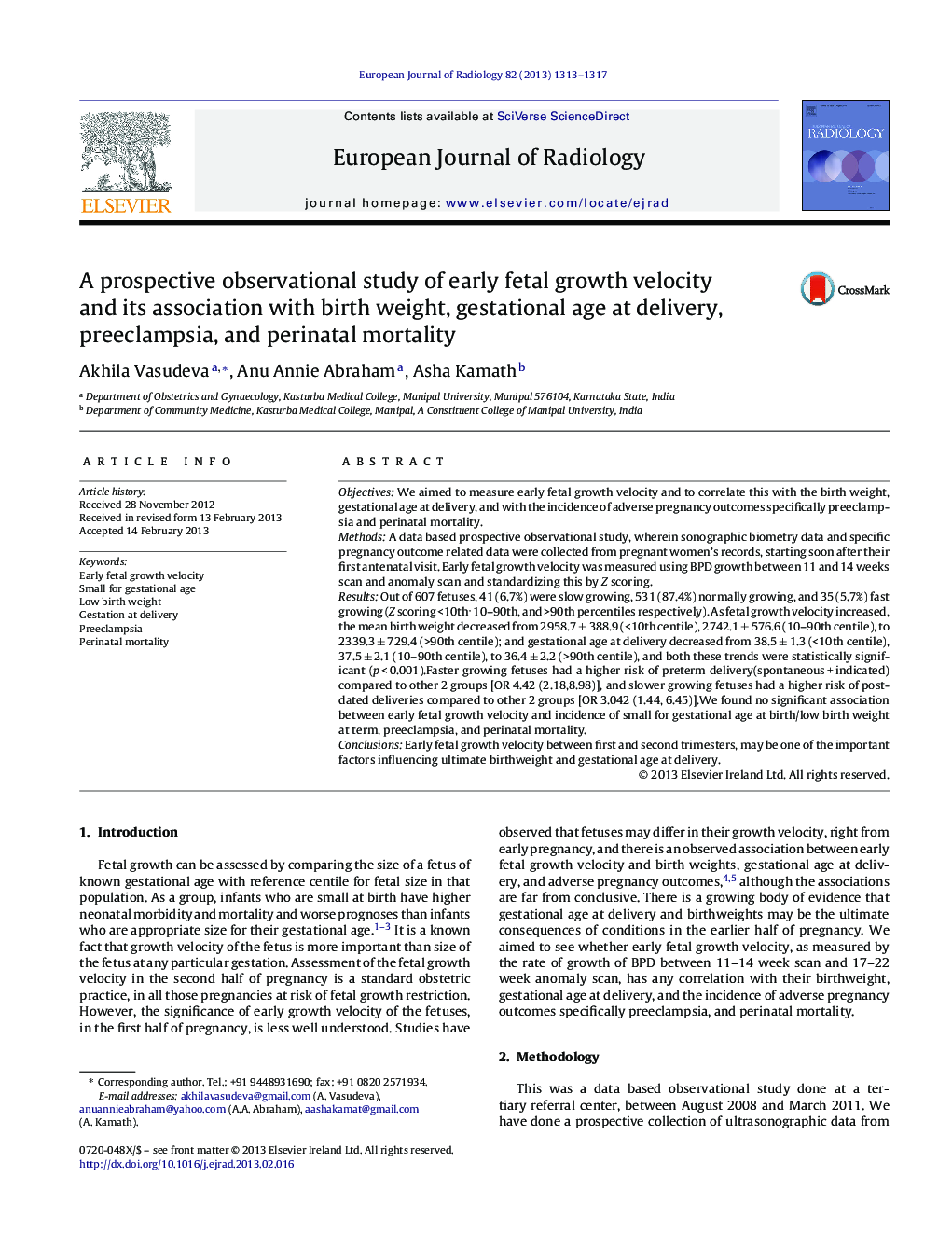| Article ID | Journal | Published Year | Pages | File Type |
|---|---|---|---|---|
| 6244648 | European Journal of Radiology | 2013 | 5 Pages |
ObjectivesWe aimed to measure early fetal growth velocity and to correlate this with the birth weight, gestational age at delivery, and with the incidence of adverse pregnancy outcomes specifically preeclampsia and perinatal mortality.MethodsA data based prospective observational study, wherein sonographic biometry data and specific pregnancy outcome related data were collected from pregnant women's records, starting soon after their first antenatal visit. Early fetal growth velocity was measured using BPD growth between 11 and 14 weeks scan and anomaly scan and standardizing this by Z scoring.ResultsOut of 607 fetuses, 41 (6.7%) were slow growing, 531 (87.4%) normally growing, and 35 (5.7%) fast growing (Z scoring <10th, 10-90th, and >90th percentiles respectively). As fetal growth velocity increased, the mean birth weight decreased from 2958.7 ± 388.9 (<10th centile), 2742.1 ± 576.6 (10-90th centile), to 2339.3 ± 729.4 (>90th centile); and gestational age at delivery decreased from 38.5 ± 1.3 (<10th centile), 37.5 ± 2.1 (10-90th centile), to 36.4 ± 2.2 (>90th centile), and both these trends were statistically significant (p < 0.001).Faster growing fetuses had a higher risk of preterm delivery(spontaneous + indicated) compared to other 2 groups [OR 4.42 (2.18,8.98)], and slower growing fetuses had a higher risk of postdated deliveries compared to other 2 groups [OR 3.042 (1.44, 6.45)].We found no significant association between early fetal growth velocity and incidence of small for gestational age at birth/low birth weight at term, preeclampsia, and perinatal mortality.ConclusionsEarly fetal growth velocity between first and second trimesters, may be one of the important factors influencing ultimate birthweight and gestational age at delivery.
